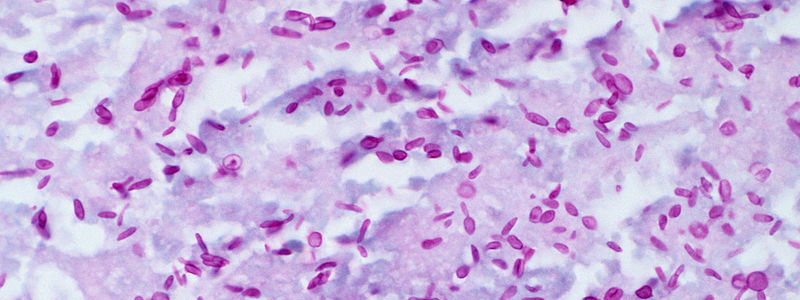BY: SAMANTHA BARTLETT, DVM
The CDC is reporting an increasing number of cases of sporotrichosis among cats in Rio de Janeiro, Brazil and subsequent increased infections in people. Veterinarians are at an increased risk from handling cats with wounds caused by the organism. The disease has also spread to neighboring areas prompting fears of further spread to people in other countries.
Sporotrichosis, also known as ‘rose gardener’s disease”, is caused by a fungal organism known as Sporothrix schenckii. The fungus makes its home all over the world and is found in plant matter. Traditionally, people in contact with plants were most likely to get infections. The fungus usually enters the skin through a cut or abrasion after handling plant material such as flowers, hay or moss. Other sources of the fungus include scratches or bites from animals. In the cases in Brazil, the isolated organism is Sporothrix brasiliensis. Researcher in Brazil found that S. brasiliensis seems to cause a more severe form of the disease in people. Cutaneous infections are most common; however, infections can occur in the lungs or may be disseminated throughout the entire body. Sporothrix is a unique organism in that it can infect in both a mold and yeast form.
Over the past 20 years, officials in Brazil have noted an increase in the number of cases of cats with Sporothrix infections. Rio de Janeiro has a large, tightly packed feral cat population as well as a number of owned cats that are allowed to roam freely. These cats are carrying the fungus on their paws and in their oral cavities and spreading it through bites and scratches with other cats. Cats in Rio de Janeiro may be more susceptible to the disease due to concurrent infection with retroviral disease or helminth parasites. In turn these cats can spread the disease to their owners or the veterinary personnel who treat them.
The incubation period in humans is 1-8 weeks with an average manifestation time of 3 weeks. The most common presentation is a single ulcerative lesion with a linear pattern of subcutaneous nodules extending outward. Definitive diagnosis is via culture, but researchers are working to develop serologic and molecular assays. Without treatment, this disease can be fatal. research to control the disease in cats and thus prevent spread to humans include helminth prevention and vaccination of cats against sporotrichosis.
The CDC is monitoring the situation and worries about the potential spread into the US through travelers and veterinary aid workers. Current efforts involve investigating the source or reservoir of the disease. The CDC is also studying ways to isolate the organism and plans to handle outbreaks should they occur. CDC officials urge veterinarians to inform diagnostic laboratories to include Sporothrix species on their list when testing samples for infectious disease. In addition, in-house cytologies of slow-healing lesions on cats may reveal several yeast organisms.











